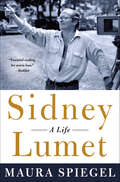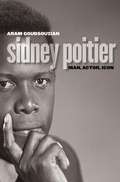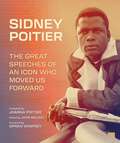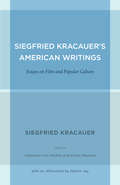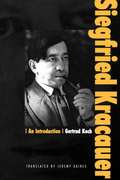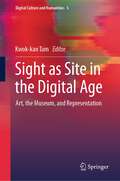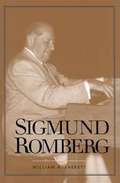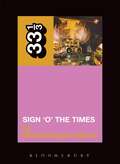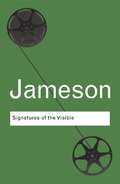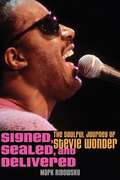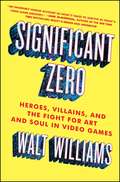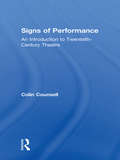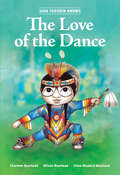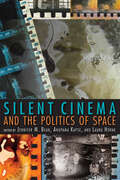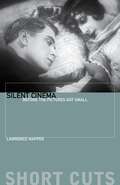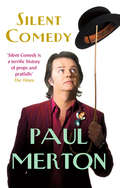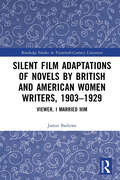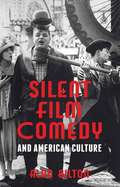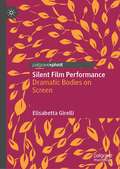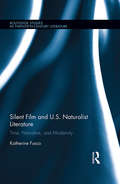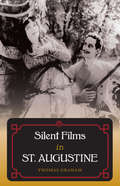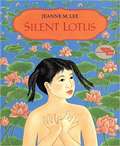- Table View
- List View
Sidney Lumet: A Life
by Maura SpiegelThe first-ever biography of the seminal American director whose remarkable life traces a line through American entertainment historyAcclaimed as the ultimate New York movie director, Sidney Lumet began his astonishing five-decades-long directing career with the now classic 12 Angry Men, followed by such landmark films as Serpico, Dog Day Afternoon, and Network. His remarkably varied output included award-winning adaptations of plays by Anton Chekhov, Arthur Miller, Tennessee Williams, and Eugene O’Neill, whose Long Day’s Journey into Night featured Katharine Hepburn and Ralph Richardson in their most devastating performances. Renowned as an “actor’s director,” Lumet attracted an unmatched roster of stars, among them: Henry Fonda, Sophia Loren, Marlon Brando, Anna Magnani, Sean Connery, Ingrid Bergman, Paul Newman, Al Pacino, Ethan Hawke, and Philip-Seymour Hoffman, accruing eighteen Oscar nods for his actors along the way. With the help of exclusive interviews with family, colleagues, and friends, author Maura Spiegel provides a vibrant portrait of the life and work of this extraordinary director whose influence is felt through generations, and takes us inside the Federal Theater, the Group Theatre, the Actors Studio, and the early “golden age” of television. From his surprising personal life, with four marriages to remarkable women—all of whom opened their living rooms to Lumet’s world of artists and performers like Marilyn Monroe and Michael Jackson—to the world of Yiddish theater and Broadway spectacles, Sidney Lumet: A Life is a book that anyone interested in American film of the twentieth century will not want to miss.
Sidney Poitier
by Aram GoudsouzianIn the first full biography of actor Sidney Poitier, Aram Goudsouzian analyzes the life and career of a Hollywood legend, from his childhood in the Bahamas to his 2002 Oscar for lifetime achievement. Poitier is a gifted actor, a great American success story, an intriguing personality, and a political symbol; his life and career illuminate America's racial history. In such films as Lilies of the Field, In the Heat of the Night, and Guess Who's Coming to Dinner, Poitier's middle-class, mannered, virtuous screen persona contradicted prevailing film stereotypes of blacks as half-wits, comic servants, or oversexed threats. His screen image and public support of nonviolent integration assuaged the fears of a broad political center, and by 1968, Poitier was voted America's favorite movie star.Through careful readings of every Poitier film, Goudsouzian shows that Poitier's characters often made sacrifices for the good of whites and rarely displayed sexuality. As the only black leading man during the civil rights era, Poitier chose roles and public positions that negotiated the struggle for dignity. By 1970, times had changed and Poitier was the target of a backlash from film critics and black radicals, as the new heroes of "blaxploitation" movies reversed the Poitier model. In the 1970s, Poitier shifted his considerable talents toward directing, starring in, and producing popular movies that employed many African Americans, both on and off screen. After a long hiatus, he returned to starring roles in the late 1980s. More recently, the film industry has reappraised his career, and Poitier has received numerous honors recognizing his multi-faceted work for black equality in Hollywood. As this biography affirms, Poitier remains one of American popular culture's foremost symbols of the possibilities for and limits of racial equality.
Sidney Poitier: The Great Speeches of an Icon Who Moved Us Forward
by Sidney Poitier Joanna PoitierThe speeches of film legend Sidney Poitier—given at commencement addresses, awards shows, memorials, and more, on topics ranging from entertainment history to filmmaking, civil rights, and parenthood—come to vibrant life in this inspirational and stunningly packaged volume from the Poitier estate that sheds new light on the trailblazing artist's life and culture of the past century. Sidney Poitier represented strength, good looks, and above all dignity at a time when Black representation on the screen was so often relegated to servile parts. He broke ground as the top box-office draw in Hollywood at the peak of his career, and was the first Black actor to win the Best Actor Oscar, for his performance in Lillies of the Field (1963). Poitier—who narrowly escaped illiteracy after rising up from an impoverished childhood and the massive obstacles he faced as a Black man in mid-twentieth century America—was also one of the most articulate and sought-after speakers of his day. This book is a one-of-a-kind collection showcasing the wise, witty, and deeply personal speeches Poitier gave at awards ceremonies, family events, memorials, and more. His salutes to artists such as Dorothy Dandridge, Spencer Tracy, Stanley Kramer, and Denzel Washington offer fresh insight on icons of our time. Poitier's unforgettable cadence and voice are clear as day on the page, sometimes with careful edits and additions written in his own hand. Compiled by his wife, Joanna Poitier, and illustrated by dozens of professional and family photos, this collection stunningly captures all that was remarkable about the man through his own words; archives moments in the history of entertainment, culture, and civil rights; and offers a uniquely inspirational perspective on career, family, art, and life.
Siegfried Kracauer's American Writings
by Martin Jay Johannes Von Moltke Siegfried Kracauer Kristy RawsonSiegfried Kracauer (1889-1966), friend and colleague of Walter Benjamin and Theodor Adorno, was one of the most influential film critics of the mid-twentieth century. In this book, Johannes von Moltke and Kristy Rawson have, for the first time assembled essays in cultural criticism, film, literature, and media theory that Kracauer wrote during the quarter century he spent in America after fleeing Nazi-occupied Europe. In the decades following his arrival in the United States, Kracauer commented on developments in American and European cinema, wrote on film noir and neorealism, examined unsettling political trends in mainstream cinema, and reviewed the contemporary experiments of avant-garde filmmakers. As a cultural critic, he also ranged far beyond cinema, intervening in debates regarding Jewish culture, unraveling national and racial stereotypes, and reflecting on the state of arts and humanities in the 1950s. These essays, together with the editors' introductions and an afterward by Martin Jay offer illuminating insights into the films and culture of the postwar years and provide a unique perspective on this eminent émigré intellectual.
Siegfried Kracauer: An Introduction
by Gertrud KochSiegfried Kracauer has been misunderstood as a naïve realist, appreciated as an astute critic of early German film, and noticed as the interesting exile who exchanged letters with Erwin Panofsky. But he is most widely thought of as the odd uncle of famed Frankfurt School critical theorists Jürgen Habermas, Theodor Adorno, Walter Benjamin, and Max Horkheimer. Recently, however, scholars have rediscovered in Kracauer's writings a philosopher, sociologist, and film theorist important beyond his associations--and perhaps one of the most significant cultural critics of the twentieth century. Gertrud Koch advances this Kracauer renaissance with the first-ever critical assessment of his entire body of work. Koch's analysis, which is concise without sacrificing thoroughness or sophistication, covers both Kracauer's best-known publications (e.g., From Caligari to Hitler, in which he gleans the roots of National Socialism in the films of the Weimar Republic) and previously underexamined texts, including two newly discovered autobiographical novels. Because Kracauer's wide-ranging works emerge from no rigidly unified approach, instead always remaining open to unusual and highly individual perspectives, Koch resists the temptation to force generalization. She does, however, identify recurring tropes in Kracauer's lifetime effort to perceive the basic posture and composition of particular cultures through their visual surfaces. Koch also finds in Kracauer a surprisingly contemporary cultural commentator, whose ideas speak directly to current discussions on film, urban modernity, feminism, cultural representation, violence, and other themes. This book was long-awaited in Germany, as well as widely and well reviewed. Now translated into English for the first time, it will fuel already growing interest in the United States, where Kracauer lived and wrote from 1941 until his death in 1966. It will attract the attention of students and scholars working in Film Studies, German Studies, Comparative Literature, Critical Theory, Cultural Studies, Philosophy, and History.
Sight as Site in the Digital Age: Art, the Museum, and Representation (Digital Culture and Humanities #5)
by Kwok-Kan TamThis volume presents a broad coverage of theoretical issues that deal with digital culture, representation and ideology in art and museums, and other cultural sites, offering new insights into issues of representation in the digitization of art. It critically examines the roles of museum and archives in the digital age and reexamines the intricate relations between sight and site in art, museums, exhibitions, theme parks, theatre performances, music videos, and films. The collection represents a multidisciplinary approach to the complex issues underlying the advent of technologies and digital culture. The rise of visual culture since the twentieth century can be accounted for by the advent of technology in film, TV, museum exhibitions, and the wide use of websites, but it can also be understood as a paradigmatic shift toward representation as a visual means to interpret culture, with new understandings of the site-sight dilemma and the co-implications in related tensions. Complicating the issue of representation is the rise of digital culture, as digital sites replace actual physical sites. This book explores how the virtual has replaced the actual, and in what ways, and to what effects, the digital has displaced the physical. With contributions by museum curators, communications scholars, visual artists, theatre artists, filmmakers, literary critics, and historians, this volume is of appeal to academics and graduate students in information science, art, media, performance, literary and cultural studies, and history. “The book binds together different concepts such as site, sight and digitalization in a very original way. It convincingly gathers contributions from academics and practitioners, artists and museum specialists. The chapters are theoretically well-founded, show an interesting breadth of content and are also dealing with current developments.”— Monika Gänssbauer, Professor of Chinese and Head of the Institute of Asian, Middle Eastern and Turkish Studies, Stockholm University, Sweden “The chapters raise important and latest questions and discussions on the impact of digital technology has on art, culture, creativity, representation and innovation. They are original in dealing with latest examples in recent years, especially during the pandemic, with reflections and philosophical discussions on the transformation digital culture undergoes in relation to human and posthuman contexts, with examinations of art works, archives and museum collections, exhibitions, theme parks, theatre performances, films and music videos that encompass cultures from ancient to contemporary, from the West to the East, and from physical to digital.”— Jack Leong, Associate Dean of Research and Open Scholarship, York University Libraries, Toronto, Canada
Sigmund Romberg
by William A. EverettHungarian-born composer Sigmund Romberg (1887-1951) arrived in America in 1909 and within eight years had achieved his first hit musical on Broadway. This early success was soon followed by others, and in the 1920s his popularity in musical theater was unsurpassed. In this book, William Everett offers the first detailed study of the gifted operetta composer, examining Romberg's key works and musical accomplishments and demonstrating his lasting importance in the history of American musicals. Romberg composed nearly sixty works for musical theater as well as music for revues, for musical comedies, and, later in life, for Hollywood films. Everett shows how Romberg was a defining figure of American operetta in the 1910s and 1920s (Maytime, Blossom Time,The Student Prince), traces the new model for operetta that he developed with Oscar Hammerstein II in the late 1920s (The Desert Song, The New Moon), and looks at his reworked style of the 1940s (Up in Central Park). This book offers an illuminating look at Romberg's Broadway career and legacy.
Sign 'O' the Times (33 1/3 #10)
by Michaelangelo MatosOne of the greatest double albums of the vinyl era, Sign 'O' the Times shows Prince at his peak. Here, Michaelangelo Matos tells the story of how it emerged from an extraordinary period of creativity to become one of the landmark recordings of the 1980s. He also illustrates beautifully how - if a record is great enough and lucky enough to hit you at the right time - it can change your way of looking at the world.
Signatures of the Visible
by Fredric JamesonIn such celebrated works as Postmodernism: The Cultural Logic of Late Capitalism, Fredric Jameson has established himself as one of America‘s most observant cultural commentators. In Signatures of the Visible, Jameson turns his attention to cinema - the artform that has replaced the novel as the defining cultural form of our time. Histori
Signed, Sealed, and Delivered: The Soulful Journey of Stevie Wonder
by Mark RibowskyFor the first time, Signed, Sealed, and Delivered takes an in-depth look at Stevie Wonder's life and his evolution from kid-soul pop star into a mature artist whose music helped lay the groundwork for the evolution of hip hop and rap.
Significant Zero: Heroes, Villains, and the Fight for Art and Soul in Video Games
by Walt WilliamsFrom the award-winning videogame writer behind Spec Ops: The Line comes an exclusive behind-the-scenes look at how today’s blockbuster video games are made.When his satirical musings in a college newspaper got him discharged from the Air Force, it became clear to Walt Williams that his destiny in life was to be a writer—he just never thought he’d end up writing video games, let alone working on some of the most successful franchises in the industry—Bioshock, Civilization, Borderlands, and Mafia among others. Williams pulls back the curtain on an astonishingly profitable industry that has put its stamp on pop culture and yet is little known to those outside its walls. In his reflective yet comically-observant voice, Williams walks you through his unlikely and at times inglorious rise within one of the world’s top gaming companies, exposing an industry abundant in brain power and out-sized egos, but struggling to stay innovative. Significant Zero also provides clear-eyed criticism of the industry’s addiction to violence and explains how the role of the narrative designer—the poor soul responsible for harmonizing gameplay with storylines—is crucial for expanding the scope of video games into more immersive and emotional experiences. Significant Zero offers a rare look inside this fascinating, billion-dollar industry and a path forward for its talented men and women—gamers and nongamers alike—that imagines how video games might inspire the best in all of us.
Signs of Performance: An Introduction to Twentieth-Century Theatre
by Colin CounsellSigns of Performance provides the beginning student with working examples of theatrical analysis. Its range covers the whole of twentieth century theatre, from Stanislavski to Brecht and Samuel Beckett to Robert Wilson. Colin Counsell takes an historical look at theatre as a cultural practice, clearly tracing connections between: * Key practitioners' ideas about performance * The theatrical practices prompted by those ideas * The resulting signs which emerge in performance * The meanings and political consequences of those signs It provides an understandable theoretical framework for the study of theatre as a an signifying practice, and offers vivid explanations in clear, direct language. It opens up this fascinating field to a broad audience.
Siha Tooskin Knows the Love of the Dance (Siha Tooskin Knows)
by Charlene Bearhead Wilson BearheadPaul Wahasaypa—Siha Tooskin—has invited his friend, Jeff, to a powwow. It&’s Jeff&’s very first powwow, and is he ever nervous! What if he says or does the wrong thing? Grass dancers, Fancy Shawl dancers, Chicken dancers—what does it all mean? Follow along as Jeff learns all about the dances and their beautiful traditions. See you at the powwow!The Siha Tooskin Knows series uses vivid narratives and dazzling illustrations in contemporary settings to share stories about an 11-year-old Nakota boy.
Siha Tooskin Knows the Love of the Dance (Siha Tooskin Knows)
by Charlene Bearhead Wilson BearheadPaul Wahasaypa—Siha Tooskin—has invited his friend, Jeff, to a powwow. It&’s Jeff&’s very first powwow, and is he ever nervous! What if he says or does the wrong thing? Grass dancers, Fancy Shawl dancers, Chicken dancers—what does it all mean? Follow along as Jeff learns all about the dances and their beautiful traditions. See you at the powwow!The Siha Tooskin Knows series uses vivid narratives and dazzling illustrations in contemporary settings to share stories about an 11-year-old Nakota boy.
Silent Cinema and the Politics of Space (New Directions in National Cinemas)
by Jennifer M. Bean, Anupama Kapse and Laura HorakIn this cross-cultural history of narrative cinema and media from the 1910s to the 1930s, leading and emergent scholars explore the transnational crossings and exchanges that occurred in early cinema between the two world wars. Drawing on film archives from around the world, this volume advances the premise that silent cinema freely crossed national borders and linguistic thresholds in ways that became far less possible after the emergence of sound. These essays address important questions about the uneven forces–geographic, economic, political, psychological, textual, and experiential–that underscore a non-linear approach to film history. The "messiness" of film history, as demonstrated here, opens a new realm of inquiry into unexpected political, social, and aesthetic crossings of silent cinema.
Silent Cinema: Before the Pictures Got Small (Short Cuts)
by Lawrence NapperSince the spectacular success of The Artist (2011) there has been a resurgence of interest in silent cinema, and particularly in the lush and passionate screen dramas of the 1920s. This book offers an introduction to the cinema of this extraordinary period, outlining the development of the form between the end of the First World War and the introduction of synchronized sound at the end of the 1920s. Lawrence Napper addresses the relationship between film aesthetics and the industrial and political contexts of film production through a series of case studies of "national" cinemas. It also focuses on film-going as the most popular leisure activity of the age. Topics such as the star system, cinema buildings, musical accompaniments, film fashions, and fan cultures are addressed—all the elements that ensured that the experience of the pictures was "big." The international dominance of Hollywood is outlined, as are the different responses to that dominance in Britain, Germany, and the USSR. Case studies seek to move beyond the familiar silent canon, and include The Oyster Princess (1919), It (1927), Shooting Stars (1927), and The Girl with the Hatbox (1927).
Silent Comedy
by Paul MertonOn the surface it may seem slightly surprising that a master of verbal humour should also be a devotee of silent comedy, but Paul Merton is completely passionate about the early days of Hollywood comedy and the comic geniuses who dominated it. His knowledge is awesome - as anyone who watched his BBC 4 series Silent Clowns or attended the events he has staged nationwide will agree - his enthusiasm is infectious, and these qualities are to be found in abundance in his book. Starting with the very earliest pioneering short films, he traces the evolution of silent comedy through the 1900s and considers the works of the genre's greatest exponents - Buster Keaton, Charlie Chaplin, Laurel and Hardy and Harold Lloyd - showing not only how each developed in the course of their career but also the extent to which they influenced each other. At the same time, Paul brings a comedian's insight to bear on the art of making people laugh, and explores just how the great comic ideas, routines, gags and pratfalls worked and evolved. His first book for ten years, this is destined to be a classic.
Silent Film Adaptations of Novels by British and American Women Writers, 1903-1929: Viewer, I Married Him (Routledge Studies in Twentieth-Century Literature)
by Jamie BarloweSilent Film Adaptations of Novels by British and American Women Writers, 1903–1929 focuses on fifty-three silent film adaptations of the novels of acclaimed authors George Eliot, Charlotte Brontë, Emily Brontë, Mary Shelley, Louisa May Alcott, Harriet Beecher Stowe, Willa Cather, and Edith Wharton. Many of the films are unknown or dismissed, and most of them are degraded, destroyed, or lost—burned in warehouse fires, spontaneously combusted in storage cans, or quietly turned to dust. Their content and production and distribution details are reconstructed through archival resources as individual narratives that, when considered collectively, constitute a broader narrative of lost knowledge—a fragmented and buried early twentieth-century story now reclaimed and retold for the first time to a twenty-first-century audience. This collective narrative also demonstrates the extent to which the adaptations are intertextually and ideologically entangled with concurrently released early “woman’s films” to re-promote and re-instill the norm of idealized white, married, domesticated womanhood during a time of extraordinary cultural change for women. Retelling this lost narrative also allows for a reassessment of the place and function of the adaptations in the development of the silent film industry and as cinematic precedent for the hundreds of sound adaptations of the literary texts of these eight women writers produced from 1931 to the 2020s.
Silent Film Comedy and American Culture
by Alan BiltonBilton's study of early 20th century American culture interprets the anarchic absurdity of slapstick movies as a form of collective anxiety dream, their fantastical images and illogical gags bypassing rational thought to express the unconscious fears, wishes and concerns of the modern age. Silent film comedy, with its childlike love of the illogical, the destructive and the anti-social, seems to suggest a form of comic revolt against the mechanisation and the uniformity of the machine age, but the book also charts how a new consumer culture sought simultaneously to tame and contain these energies, redirecting them in the service of a newly emergent mass culture. Not just a film history of the silent era, Bilton also provides a provocative and lively engagement with the origins of mass culture, tracing the origins of Hollywood's dream factory and alongside it the roots of our own irrational, childlike, celebrity-obsessed consumer culture.
Silent Film Performance: Dramatic Bodies on Screen
by Elisabetta GirelliThis book provides a groundbreaking exploration of silent film performance. It combines close reading of silent screen acting with theoretically informed analysis, stressing the overlap between different performative arts, such as film and stage acting, dance, mime, and pantomime. The boundary between silent and sound films is also challenged. Anna Pavlova’s acting in The Dumb Girl of Portici is read through Freud’s work on the uncanny, disability studies, and notions of intermediality. Vladimir Mayakovsky’s performance in The Young Lady and the Hooligan is approached as a silent soliloquy and a representation of loneliness. Ivan Mozzhukhin’s tour de force in The Late Mathias Pascal is discussed through a queer failure lens, while Pola Negri’s presence in Hotel Imperial is analysed with the aid of texts on wartime anxiety. Harald Kreutzberg’s stunning number in Paracelsus is examined in the light of theories of mime and pantomime, arguing for its subversive potential in a Third Reich sound film.
Silent Film and U.S. Naturalist Literature: Time, Narrative, and Modernity (Routledge Studies in Twentieth-Century Literature)
by Katherine FuscoTypically, studies of early cinema’s relation to literature have focused on the interactions between film and modernism. When film first emerged, however, it was naturalism, not modernism, competing for the American public’s attention. In this media ecosystem, the cinema appeared alongside the works of authors including Charlotte Perkins Gilman, Jack London, and Frank Norris. Drawing on contemporaneous theories of time and modernity as well as recent scholarship on film, narrative, and naturalism, this book moves beyond traditional adaptation studies approaches to argue that both naturalism and the early cinema intervened in the era’s varying experiments with temporality and time management. Specifically, it shows that American naturalist novels are constructed around a sustained formal and thematic interrogation of the relationship between human freedom and temporal inexorability and that the early cinema developed its norms in the context of naturalist experiments with time. The book identifies the silent cinema and naturalist novel’s shared privileging of narrative progress over character development as a symbolic solution to social and aesthetic concerns ranging from systems of representation, to historiography, labor reform, miscegenation, and birth control. This volume thus establishes the dynamic exchange between silent film and naturalism, arguing that in the products of this exchange, personality figures as excess bogging down otherwise efficient narratives of progress. Considering naturalist authors and a diverse range of early film genres, this is the first book-length study of the reciprocal media exchanges that took place when the cinema was new. It will be a valuable resource to those with interests in Adaptation Studies, American Literature, Film History, Literary Naturalism, Modernism, and Narrative Theory.
Silent Films in St. Augustine
by Thomas Graham“This absorbing tale, documenting the forgotten history of early moviemaking in St. Augustine, is a must-read for film enthusiasts.”—Janelle Blankenship , coeditor of European Visions: Small Cinemas in Transition “Very few people have any idea that St. Augustine played any role in early film history. This book brings St. Augustine into a much larger film conversation.”—Christina Lane, author of Magnolia “This richly detailed book tells the story of early filmmakers’ adventures in St. Augustine and captures the excitement of their moviemaking escapades.”—Kathryn Fuller-Seeley, coauthor of One Thousand Nights at the Movies: An Illustrated History of Motion Pictures, 1895–1915 “Given that the great majority of these early films are now lost, Graham makes an important contribution to the study of Florida’s image on film.”—Jan-Christopher Horak, author of Saul Bass: Anatomy of Film Design “The ‘reel’ history of Florida and its contribution to the development of American film history has been left out of mainstream textbooks and accounts. Thomas Graham’s book is a link in the chain of that history and an important addition to film scholarship.”—Susan Doll, coauthor of Florida on Film: The Essential Guide to Sunshine State Cinema and Locations “Through entertaining stories of how St. Augustine lured studios and enriched filmmaking with Henry Flagler’s railroad and architecture, Graham adds new detail to our understanding of the silent film era.”—Rita Reagan, Norman Studios Silent Film Museum Before Hollywood, when America’s rising motion picture industry was based on the East Coast, early film stars like Rudolph Valentino, Thomas Meighan, Ethel Barrymore, and Oliver Hardy made movies in St. Augustine, Florida. Silent Films in St. Augustine tells stories of the leading film producers and actors who escaped New York winters—and kept the studio doors open—in St. Augustine’s sunshine and warm weather. Scenes for more than 120 films were made in St. Augustine from 1906 to 1926 by film companies including Thanhouser, Lubin, Éclair, Pathé, Edison, Vitagraph, and Paramount. The first feature-length Frankenstein movie, Life Without Soul, was partly shot in St. Augustine. Theda Bara became a “vamp” sensation for her role in A Fool There Was. Sidney Drew acted in the genderbending A Florida Enchantment. Noted directors Edwin S. Porter, Maurice Tourneur, and George Fitzmaurice also set up shop in the beach town. Filmmakers used St. Augustine’s striking architecture to create backdrops for movies set in exotic foreign locales. The famous Castillo de San Marcos, the stone houses on the narrow streets, and Henry Flagler’s Spanish Renaissance palace hotels were reimagined as Spain, Italy, France, Egypt, Arabia, South Africa, Brazil, and Hawaii. Residents of St. Augustine loved seeing film teams in action on their streets and would gather around the camera to watch the actors and marvel at the outlandish costumes. Cast as extras in larger productions, locals packed theater houses to catch a glimpse of themselves and their neighbors on the screen. Describing the lavish sets, theatrical action, and New York movie personalities that filled St. Augustine, Thomas Graham evokes an intensely creative time and place in the history of American moviemaking.
